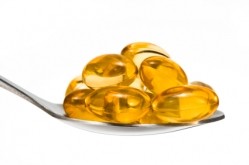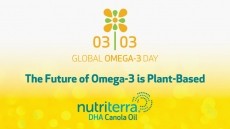Special edition: Market insights
Datamonitor: How to keep the omega-3 health halo

Despite the emerging popularity of omega-3 in the past few years, it is still possible for manufacturers to do more in the way of promoting the ingredient and its benefits, due to the worry that it could drop from the consumer consciousness as quickly as it arrived.
The number of products launched in the US claiming to be ‘high in omega-3’ has grown significantly, according to Datamonitor’s Product Launch Analytics database. It has more than doubled from 136 launches in 2004 to 273 in 2008, with further growth expected by the end of this year.
Low awareness of benefits
Many consumers are aware that consumption of omega-3 is essentially a good thing, due to a myriad of cited benefits including increased cognitive functioning. However, the majority are still in the dark as to just how many areas of health it can have a beneficial impact on, and understanding of recommended intake is minimal.
To illustrate this, a Unilever survey of 1,133 Canadian adults in 2009 revealed that although more than 70 percent of respondents claimed to be educated about the benefits of omega-3, half were unaware of potential heart health properties – one of the main benefits associated with consumption of the nutrient.
Today we live in a label-reading culture. If messages are publicized well enough and repeated often enough then consumers will begin to take notice – even if this is on an almost-subliminal level at first.
To illustrate the importance of this, 55 percent of US consumers told Datamonitor in 2008 that they agreed with the statement “I’m very interested in food label information”. Only 12 percent disagreed.
Remove the uncertainty
Given this knowledge, it is essential that manufacturers move to remove the uncertainty that surrounds omega-3 consumption.
A large part of the problem is that there is no solitary, agreed recommended daily intake; instead, there are currently numerous and varying unofficial recommendations. For example the US Institute of Medicine (IOM) recommends 270mg/day of the long-chain omega-3s EPA/DHA, while the American Dietetic Association (ADA) recommends at least 500mg EPA/DHA for heart health. Meanwhile, a recent recommendation made by the European Food Safety Authority’s Panel on Dietetic Products, Nutrition and Allergies was that 250mg of DHA/EPA should be consumed on a daily basis.
Without clear recommendations and guidelines it is little surprise that consumers do not understand the nuances of omega-3 consumption. It is up to manufacturers to change this.
Citing the multiple benefits associated with omega-3 consumption harnesses the consumer desire to base their diets around ‘positive’ nutritional options (i.e. the idea that food and beverages extol particular health benefits rather than simply moderating and avoiding unhealthy products). Therefore, including accredited scientific conclusions (good for heart health, joint health, cognitive functioning etc.) holds considerable appeal.
The most effective visual way for manufacturers to display omega-3 credentials is by having the ‘excellent source’ logo on product packaging. In order to qualify for this, products must currently contain 32mg of EPA (eicosapentaenoic acid) and DHA (docosahexaenoic acid) omega-3s per serving
Keeping the halo
Consumers are not going to proactively seek out information about omega-3. They are only going to respond to it if it comes to them in a plausible and credible way.
Making efforts to ensure that products meet guidelines and then display very visual proof of this is critical in raising awareness and making products seem more appealing than competitors who cannot offer the same.
Without doing so, manufacturers risk losing out on the potential of an ingredient which currently enjoys ‘healthy halo’ status.
To read the Datamonitor article on the European market for omega-3, click here.
For more articles in this series, click here.












